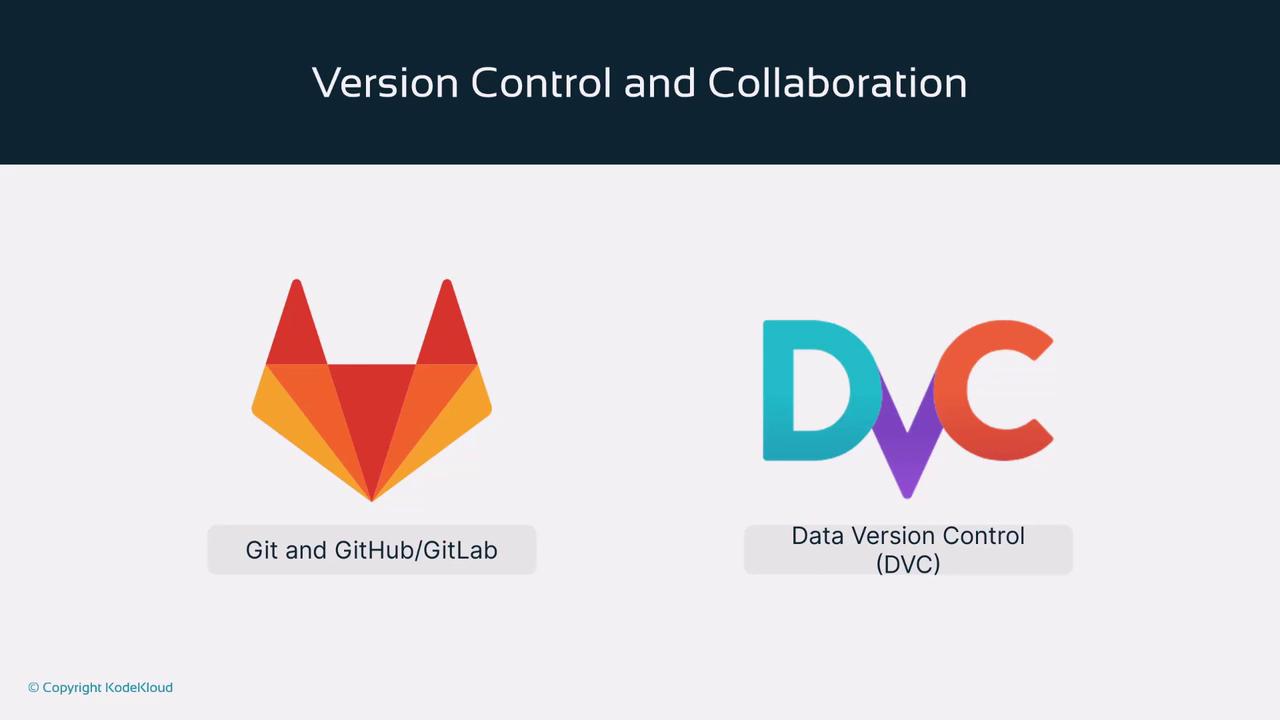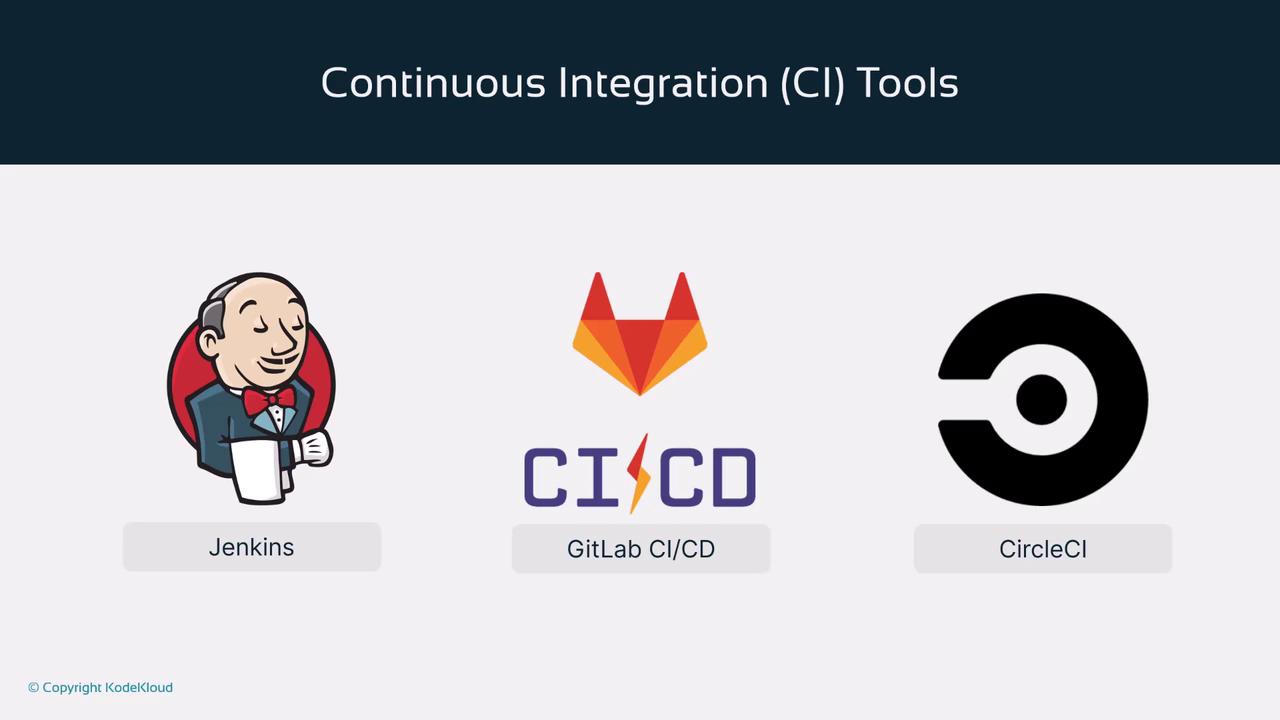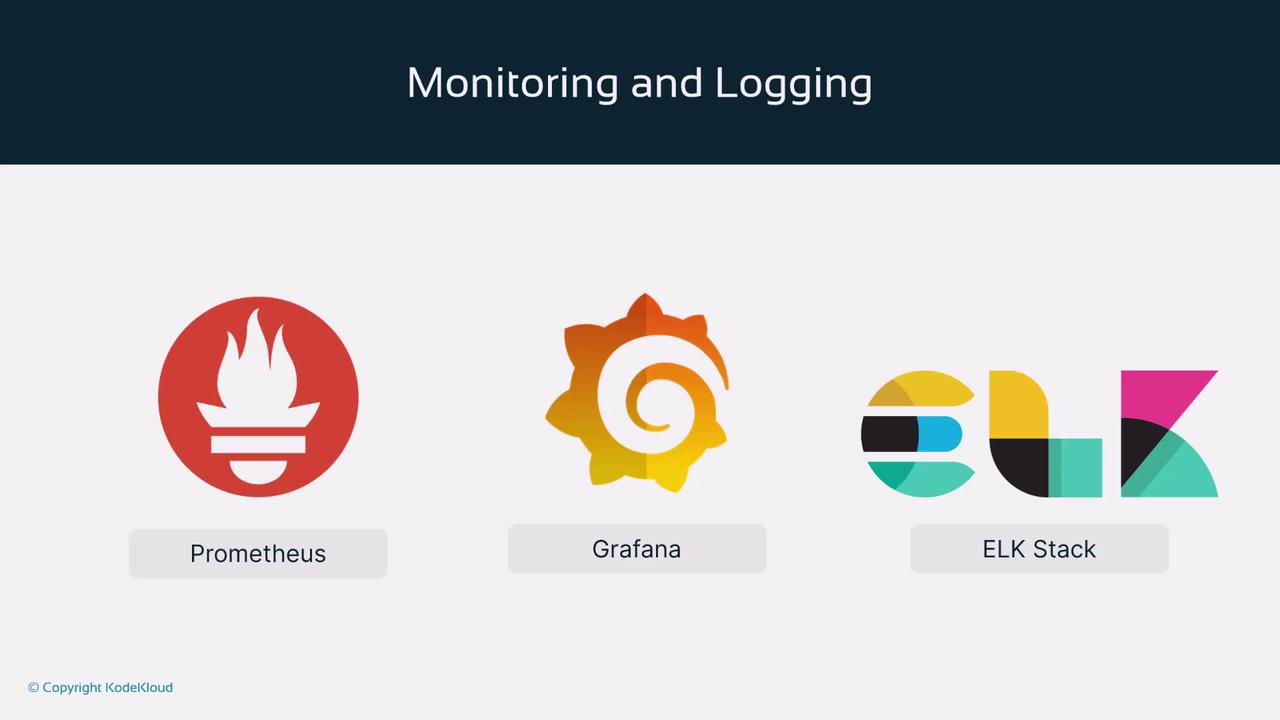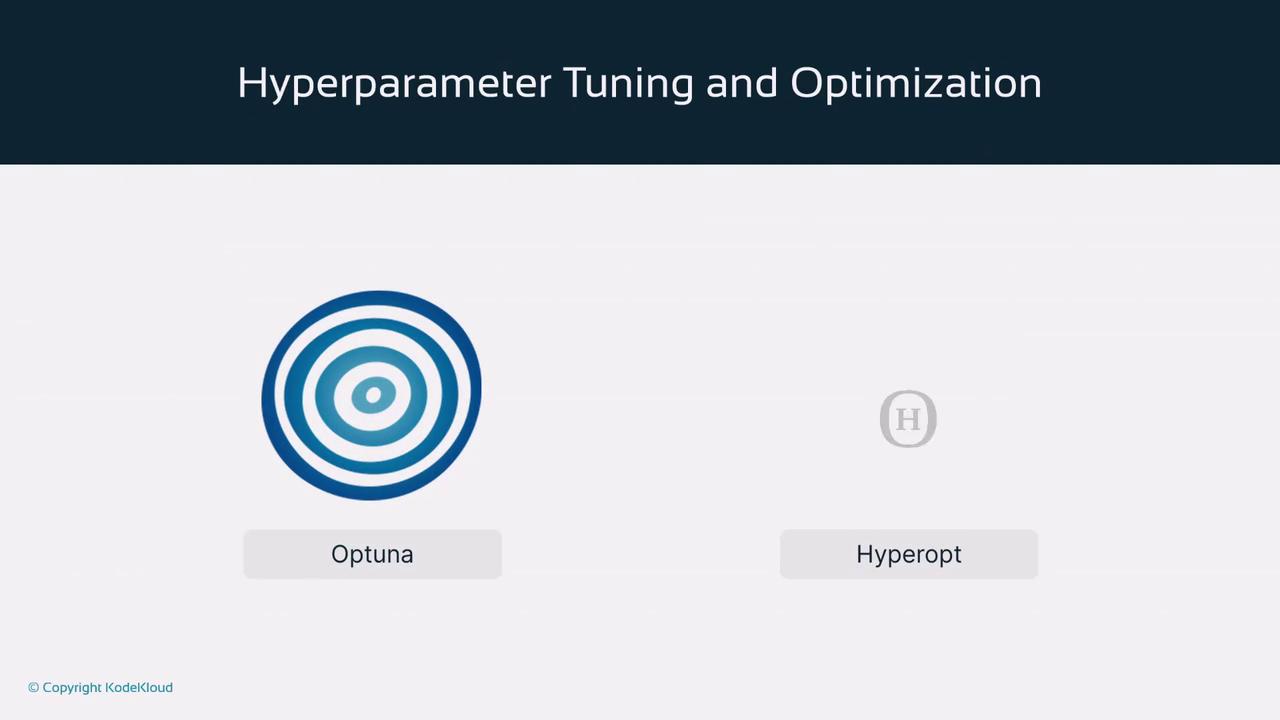Fundamentals of MLOps
Introduction to MLOps
Finding and Exploring Right Tools from DevOps for MLOps
Welcome to this lesson where we explore essential DevOps tools that power robust MLOps pipelines. These tools streamline the deployment, management, and scaling of machine learning models while ensuring automation and efficiency in production environments.

Version Control and Collaboration
Efficient version control and collaboration are the cornerstones of modern software and machine learning projects. Git remains the standard for tracking source code history and team collaboration through services like GitHub and GitLab. Additionally, Data Version Control (DVC) extends Git's functionality to handle large datasets and machine learning models, ensuring reproducibility and consistency in your ML workflows.

Continuous Integration Tools
Automating testing, building, and deployment accelerates development cycles. Consider these top continuous integration (CI) tools:
- Jenkins: A widely adopted CI/CD tool that automates testing and deployment processes.
- GitLab CI/CD: Integrated within GitLab repositories, it seamlessly manages tests, model builds, and deployments.
- CircleCI: Known for fast and reliable testing and deployment automation, CircleCI integrates smoothly with Docker containers and Kubernetes for scalable cloud deployments.

Continuous Deployment Tools
For efficient and reliable deployment pipelines, these tools are widely used in MLOps:
- Terraform Flow: A comprehensive machine learning deployment platform built on Kubernetes that supports pipeline creation, model training, and deployment.
- Terraform: A powerful infrastructure-as-code tool used to provision and manage cloud resources such as storage, compute, and networking.
- ArgoCD: A Kubernetes-native deployment tool that ensures your production deployments remain consistent with your Git repository versions.
Experiment Tracking and Management
Tracking experiments and managing models is crucial for iterative improvements in machine learning. Essential platforms include:
- MLflow: A versatile platform to manage the end-to-end ML lifecycle, from experiment tracking to model deployment.
- Neptune AI: A user-friendly tool that helps you organize experiments, compare models, and visualize key performance metrics.
![]()
Automated Testing and Validation
Maintaining high code quality and data integrity is essential. Use these tools for automated testing and data validation:
- PyTest: A flexible testing framework that makes it easier to create scalable tests for machine learning scripts.
- Great Expectations: A powerful tool for data validation that defines expectations for your datasets and alerts you to potential data quality issues.

Containerization and Orchestration
Containerization ensures that ML models and their dependencies are packaged consistently across environments, while orchestration tools allow seamless scaling and deployment.
- Docker: The gold standard for containerizing applications, letting you bundle ML models with all their required dependencies.
- Kubernetes: A leading orchestration platform that automates the deployment, scaling, and management of containerized applications, especially in large, distributed environments.
Monitoring and Logging
Robust monitoring and logging are essential for maintaining the health of your MLOps pipelines:
- Prometheus: An open-source toolkit that collects and stores metrics while providing alerting capabilities.
- Grafana: Complements Prometheus by offering powerful visualization options for your metrics data.
- Elastic Stack (ELK): An alternative solution for comprehensive logging and analytics that can work in place of Prometheus and Grafana.

Security, Compliance, and Workflow Orchestration
Security and Compliance Tools
Protecting your MLOps pipelines is critical. Consider these security and compliance tools:
- HashiCorp Vault: Securely manages secrets and sensitive information. Alternatively, native secret management services from AWS or GCP offer similar functionality.
- SonarCloud: Continuously scans your code repositories to ensure high code quality and security by detecting embedded secrets or vulnerabilities.
Workflow Orchestration
Automate your complex ML pipelines with these orchestration tools:
- Airflow: An open-source platform that assists with authoring, scheduling, and monitoring workflows across your data ingestion and model deployment tasks.
- Luigi: Another orchestration tool, though less frequently used in modern MLOps than Airflow.

Hyperparameter Tuning and Optimization
Optimizing ML models through hyperparameter tuning can significantly improve performance. Two popular tools for this purpose are:
- Optuna: Offers an efficient and flexible framework for hyperparameter optimization.
- Hyperopt: A well-known library for performing hyperparameter tuning using advanced search algorithms.

Conclusion
Incorporating these DevOps tools into your MLOps pipeline enhances collaboration, automates repetitive tasks, and streamlines the deployment of machine learning models. It is notable that about 60% of these tools are common in traditional DevOps practices, while the remaining 40% are specific to MLOps, offering a practical pathway for engineers to excel in both domains.
Next Steps
In the upcoming sections, we will dive deeper into each tool, demonstrating how to integrate them into your MLOps workflows for improved efficiency and scalability.
Thank you for reading this lesson. Stay tuned for more advanced topics that will help you master MLOps integration using state-of-the-art DevOps tools.
Watch Video
Watch video content